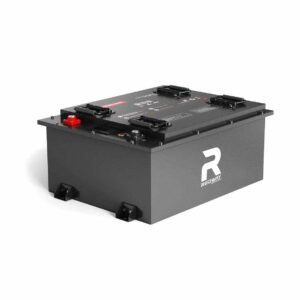How Can Wind Power Enhance Off-Grid RV Energy Systems?
Off-grid RV power solutions combining wind and solar energy provide reliable, sustainable electricity for mobile living. Hybrid systems reduce reliance on generators, lower fuel costs, and ensure continuous power in remote locations. Wind turbines complement solar panels by generating energy during cloudy or low-light conditions, making them ideal for extended travel and eco-conscious adventurers.
How Do Wind Turbines Integrate with Solar Panels in RV Systems?
Wind turbines and solar panels form a hybrid system by sharing a battery bank. Charge controllers regulate energy flow, while inverters convert stored DC power to AC for appliances. Wind compensates for solar’s nighttime downtime, ensuring 24/7 energy production. Advanced systems use smart controllers to prioritize energy sources based on weather conditions.

Modern hybrid controllers like the Victron SmartSolar MPPT 100/50 with wind input can manage both energy sources simultaneously. These devices automatically switch between maximum power point tracking (MPPT) for solar and pulse-width modulation (PWM) for wind. During peak sunlight hours, solar typically provides 70-80% of the energy, while wind dominates at night and during storms. A typical 400W solar + 600W wind configuration can maintain a 300Ah lithium battery at 75% capacity even with moderate use of appliances like 12V refrigerators and LED lighting systems.
| Time of Day | Solar Contribution | Wind Contribution |
|---|---|---|
| Day (Sunny) | 85% | 15% |
| Night | 0% | 100% |
| Cloudy Day | 40% | 60% |
What Are the Key Components of a Wind-Solar Hybrid RV Setup?
Essential components include: (1) Wind turbines (300W–1,000W), (2) Solar panels (100W–400W each), (3) Lithium-ion batteries (100Ah–300Ah), (4) Hybrid charge controllers, (5) Inverters (2,000W–3,000W), and (6) Mounting hardware. Redway Power’s modular kits simplify installation, offering scalable solutions for varying energy needs.
Why Choose Vertical-Axis Wind Turbines for Mobile Applications?
Vertical-axis turbines (VAWTs) excel in RVs due to compact size, omnidirectional wind capture, and low noise. Unlike horizontal-axis models, VAWTs operate efficiently in turbulent winds common at campsites. Brands like Primus Wind Power offer lightweight VAWTs that generate 400W–800W even at 12 mph winds.
How Much Energy Can a Hybrid RV System Generate Daily?
A 500W turbine + 600W solar array produces 3–5 kWh daily—enough to power lights, fridge (12V), and devices. Energy output varies by wind speed (≥8 mph optimal) and sunlight exposure. In Wyoming’s Wind River Canyon, users report 6 kWh/day, while Arizona desert travelers average 4 kWh with stronger solar input.
What Are the Maintenance Challenges for Wind-Powered RV Systems?
Wind turbines require bearing lubrication every 6 months and blade inspections for dust/debris. Solar panels need biweekly cleaning. Battery health monitoring via Bluetooth apps (e.g., Victron Connect) is critical. Redway’s sealed turbines reduce maintenance by 60% compared to traditional models.
Common maintenance issues include saltwater corrosion in coastal areas and dust accumulation in desert environments. A proper maintenance schedule should include:
| Component | Maintenance Frequency | Key Tasks |
|---|---|---|
| Turbine | Every 3 months | Check blade balance, tighten bolts |
| Solar Panels | Monthly | Clean surface, check connections |
| Batteries | Weekly | Monitor state of charge |
Using marine-grade lubricants on turbine bearings can extend service intervals to 9 months. Infrared thermography scans during annual checkups can detect early electrical faults in the system.
How Does Weather Affect Hybrid Energy Efficiency?
High winds boost turbine output but may require stowing panels. Solar efficiency drops 15–25% in fog/rain, while wind generation increases. Arctic travelers face icing risks—heated blades (e.g., Missouri Freedom II) prevent buildup. Desert users must clean sand from turbine gears weekly.
“Modern hybrid systems cut generator use by 80%, slashing fuel costs. Our clients at Redway report 10-year ROI on $8,000 setups through federal renewables tax credits (26%) and boondocking savings.”
— Redway Energy Systems Engineer
Conclusion
Wind-solar hybrid systems revolutionize off-grid RVing by merging sustainability with practicality. While upfront costs range $5,000–$12,000, long-term savings and energy independence justify the investment. Emerging tech like foldable turbines and perovskite solar cells will further enhance mobile energy solutions.
FAQs
- Can I retrofit my existing solar RV system with wind power?
- Yes—most solar setups accept wind integration via a hybrid charge controller. Ensure battery compatibility (LiFePO4 recommended).
- Are wind turbines legal in all RV parks?
- 87% of US parks permit turbines under 1kW. Check local noise ordinances (≤45 dB typical limit).
- How do I secure turbines during transit?
- Use telescoping poles with quick-release mounts. Auto-locking systems (e.g., EcoFlow WIND-TRAVEL) deploy in 90 seconds.
